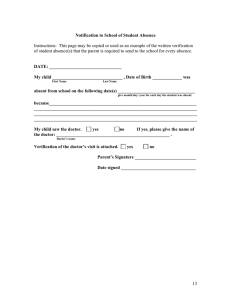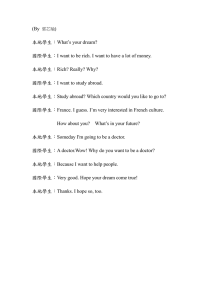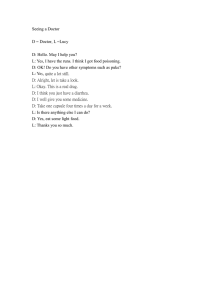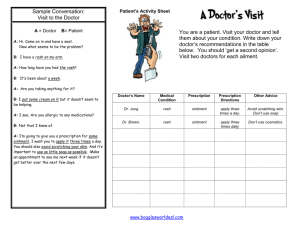Eye Injury - foreign body
advertisement
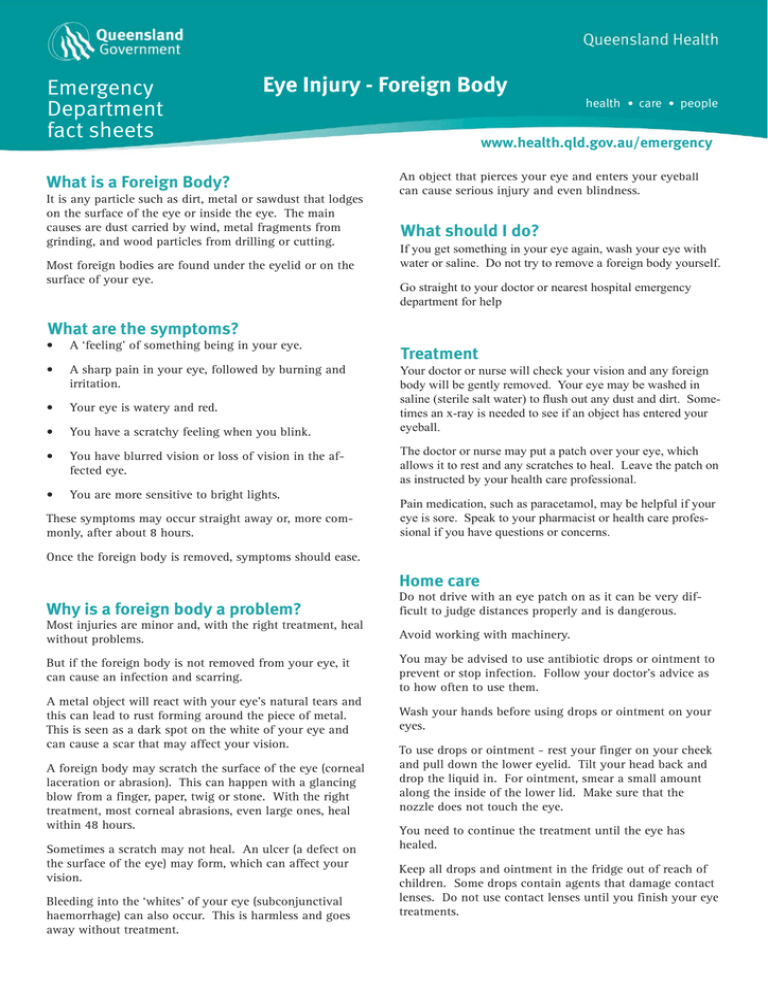
Emergency Department fact sheets Seizure Eye Injury - Foreign Body What is a Foreign Body? It is any particle such as dirt, metal or sawdust that lodges on the surface of the eye or inside the eye. The main causes are dust carried by wind, metal fragments from grinding, and wood particles from drilling or cutting. Most foreign bodies are found under the eyelid or on the surface of your eye. health • care • people www.health.qld.gov.au/emergency An object that pierces your eye and enters your eyeball can cause serious injury and even blindness. What should I do? If you get something in your eye again, wash your eye with water or saline. Do not try to remove a foreign body yourself. Go straight to your doctor or nearest hospital emergency department for help What are the symptoms? • A ‘feeling’ of something being in your eye. • A sharp pain in your eye, followed by burning and irritation. • Your eye is watery and red. • You have a scratchy feeling when you blink. • You have blurred vision or loss of vision in the affected eye. • You are more sensitive to bright lights. These symptoms may occur straight away or, more commonly, after about 8 hours. Treatment Your doctor or nurse will check your vision and any foreign body will be gently removed. Your eye may be washed in saline (sterile salt water) to flush out any dust and dirt. Sometimes an x-ray is needed to see if an object has entered your eyeball. The doctor or nurse may put a patch over your eye, which allows it to rest and any scratches to heal. Leave the patch on as instructed by your health care professional. Pain medication, such as paracetamol, may be helpful if your eye is sore. Speak to your pharmacist or health care professional if you have questions or concerns. Once the foreign body is removed, symptoms should ease. Home care Why is a foreign body a problem? Do not drive with an eye patch on as it can be very difficult to judge distances properly and is dangerous. Most injuries are minor and, with the right treatment, heal without problems. Avoid working with machinery. But if the foreign body is not removed from your eye, it can cause an infection and scarring. You may be advised to use antibiotic drops or ointment to prevent or stop infection. Follow your doctor’s advice as to how often to use them. A metal object will react with your eye’s natural tears and this can lead to rust forming around the piece of metal. This is seen as a dark spot on the white of your eye and can cause a scar that may affect your vision. Wash your hands before using drops or ointment on your eyes. A foreign body may scratch the surface of the eye (corneal laceration or abrasion). This can happen with a glancing blow from a finger, paper, twig or stone. With the right treatment, most corneal abrasions, even large ones, heal within 48 hours. Sometimes a scratch may not heal. An ulcer (a defect on the surface of the eye) may form, which can affect your vision. Bleeding into the ‘whites’ of your eye (subconjunctival haemorrhage) can also occur. This is harmless and goes away without treatment. To use drops or ointment - rest your finger on your cheek and pull down the lower eyelid. Tilt your head back and drop the liquid in. For ointment, smear a small amount along the inside of the lower lid. Make sure that the nozzle does not touch the eye. You need to continue the treatment until the eye has healed. Keep all drops and ointment in the fridge out of reach of children. Some drops contain agents that damage contact lenses. Do not use contact lenses until you finish your eye treatments. Prevention Seeking help The best way to prevent this happening again is to protect your eyes. In a medical emergency go to the nearest hospital emergency department or call an ambulance (dial 000). • Do not stand or walk near anyone who is grinding or drilling. For other medical problems see your local Doctor or health-care professional. • Always wear safety glasses when working in dusty or windy areas, such as when mowing, gardening or using machinery. 13 HEALTH (13 43 25 84) provides health information, referral and teletriage services to the public in all parts of Queensland and is available 24 hours a day, 7 days a week, 365 days a year for the cost of a local call*. These activities can produce flying debris, which may lodge in the eye. Safety glasses or goggles should be close fitting with side shields. Regular sunglasses or corrective glasses are not enough. *Calls from mobile phones may be charged at a higher rate. Please check with your telephone service provider Follow-up The doctor may want to see you again, or you may be referred to your local doctor or optometrist (eye specialist), to check that your eye is healing and that your vision is okay. You should not miss this appointment. Even though you may feel better, your eye may still not have healed fully. The follow-up is needed to make sure that the treatment is working. Want to know more? • Ask your local doctor or health care professional • Visit the Better Health Channel www.betterhealth.vic.gov.au If there are any serious problems you will be sent to an ophthalmologist (specialist eye doctor). Disclaimer: This health information is for general education purposes only. Please consult with your doctor or other health professional to make sure this information is right for you. Notes: Follow up with: Date and Time- Name- The design and general content of this factsheet are reproduced with the permission of the Victorian Minister for Health, from factsheets that are Copyright © the State of Victoria. Unauthorised reproduction and other uses comprised in the copyright are prohibited without permission. Eye Injury - Foreign Body
